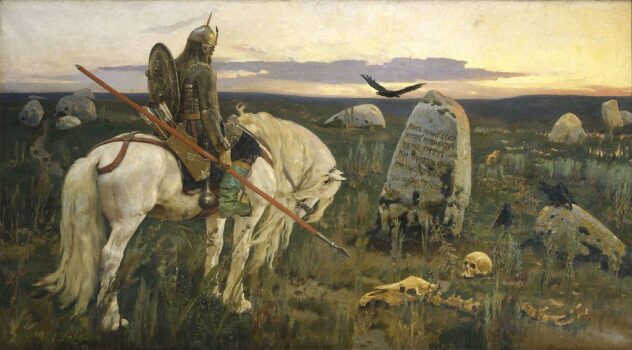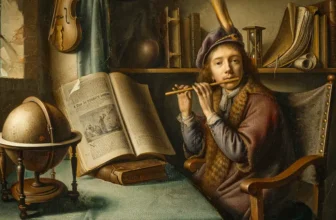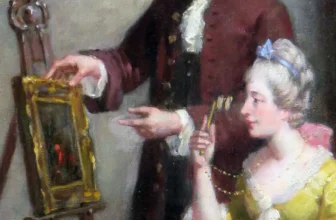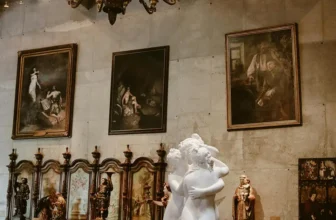There Are Crows But No Dead Tree but There is a Stone Marker
Shopping Ads: Antique Oil Paintings On Canvas For Sale. Limited Originals Available 💰😊
Authentic hidden masterpieces, Explore old master antique oil paintings from the Renaissance and Baroque eras. From 15th-century to 18th-century Antique Paintings. Bring the Renaissance and Baroque in your home. Shop Now!
🎨 Antique Oil Paintings On Canvas Renaissance, Baroque Art Antique Oil Paintings, Make Offer 16th to 18th Century Portrait Paintings
Among the many iconic paintings that encapsulate the soul of Russian folklore and national identity, Knight at the Crossroads (also known as The Bogatyr at the Crossroads) by Viktor Vasnetsov stands as a monumental piece. Painted in 1878, this evocative work delves deep into the heart of Slavic mythology and moral allegory, capturing a moment of profound inner and outer conflict. It is more than a depiction of a lone warrior before a signpost, it is a visual meditation on destiny, death, duty, and the eternal human struggle between paths.
In this story post, we will explore the painting from multiple angles: its narrative and composition, symbolic depth, thematic interpretations, the artistic style Vasnetsov employs, and the painting’s current home.
What is “Knight at the Crossroads” by Viktor Vasnetsov All About?
At first glance, Knight at the Crossroads presents a simple scene: a lone knight on horseback has stopped before a stone marker that displays an inscription. The knight, a bogatyr, a term for a heroic warrior in Slavic folklore, gazes at the text, deep in contemplation. The desolate landscape stretches out around him, bleak and windswept, with dark clouds looming above. A human skull lies near the signpost, and a skeletal arm reaches from the ground.
But the simplicity is deceptive. This painting represents a critical moment of choice. The inscription, drawn from Russian folklore, reads something to the effect of:
“If you go to the right, you will lose your horse; if you go to the left, you will lose your life; if you go straight, you will lose both.”
This is a place of doom, trial, and transformation, a symbolic crossroads where the hero must make a decision that will seal his fate.
What is Happening in the Painting?
In the painting, the knight (often interpreted as the legendary hero Ilya Muromets) pauses before a stone with the ominous inscription. He is not in battle. He is not in motion. He is caught in a stillness that signals a moment of introspection, a point of decision. The landscape mirrors his uncertainty, bleak, barren, and full of latent menace.
The inclusion of bones, a skull, and skeletal limbs suggests this is not merely a metaphorical crossroads but also a place where others have come and failed. The hero is not the first to stand at this point, and he may not be the last. This raises the stakes of the decision: the very land is haunted by failure, death, and sacrifice.
Vasnetsov captures the tension in the knight’s pose, his stoic posture, his armor still glistening under the gloomy sky, his horse equally solemn. It is a quiet but powerful moment. The action here is not external combat, but internal conflict.
Symbolism and Interpretation
A. The Crossroads: A Universal Symbol
Crossroads in myth, literature, and art are powerful symbols of transition, choice, and fate. In Slavic tradition, the crossroads is often a place where supernatural beings dwell and where travelers are tested. Vasnetsov’s painting draws on this archetype, presenting the crossroads as both a literal location and a metaphor for existential dilemma.
In the painting, the knight’s presence at this junction represents the moment where every hero must decide their path. Do they choose glory, survival, or martyrdom? Do they pursue the straight path knowing the cost? This moment reflects a deeper philosophical inquiry into purpose and sacrifice.
B. The Inscription: Fatal Choices
The stone’s inscription presents a tragic trilemma: no choice is without profound loss. The paths lead to death, destruction, or total loss. This introduces a fatalistic undertone, suggesting that the true heroic path lies not in avoiding suffering, but in choosing a cause worth suffering for.
The knight’s contemplation becomes an act of moral and spiritual significance. He is not simply choosing a direction, he is weighing the value of his mission against the cost of his life.
C. The Skull and Bones: Memento Mori
The human skull and bones serve as classic memento mori symbols, reminders of death. These motifs anchor the painting in the broader tradition of vanitas art, which confronts viewers with mortality. Vasnetsov isn’t just illustrating a folk tale; he is meditating on death itself. The skull warns both the knight and the viewer: all roads end here, but what legacy will you leave?
D. The Knight and Horse: Duty and Burden
The knight is not just a warrior; he is an emblem of national pride, courage, and duty. His armor and weaponry signal readiness, but his stillness conveys contemplation rather than aggression. The horse, often a symbol of vitality and movement, stands subdued. Together, they reflect the weight of the moment, a pause before potential annihilation.
Artistic Style and Techniques
Vasnetsov was a pivotal figure in Russian art, known for merging the techniques of academic painting with themes of Russian folklore and epic poetry. Knight at the Crossroads exemplifies his unique blend of realism, romanticism, and symbolism.
A. Realism with Mythical Undertones
The armor, horse, and terrain are rendered with meticulous detail, reflecting Vasnetsov’s training in academic realism. However, the subject and composition transcend mere representation. The ominous atmosphere, mystical setting, and symbolic elements elevate the scene into the realm of myth.
B. Romanticism and National Identity
As a leading figure of the Peredvizhniki (The Wanderers), a group of Russian realist painters who sought to break away from academic elitism, Vasnetsov infused his works with themes of Russian heritage, spirituality, and identity. His romantic nationalism sought to reconnect viewers with their cultural past.
C. Mood and Color Palette
The palette is dominated by earthy browns, greys, and dark greens. The sky is heavy with storm clouds, casting a gloomy tone over the scene. Light is used sparingly, illuminating the knight’s armor and the inscription, drawing the viewer’s focus to the central decision. The somber tone enhances the gravity of the moment.
Psychological and Philosophical Layers
Beyond folklore and visual aesthetics, Knight at the Crossroads offers a deeply philosophical reflection on the human condition.
A. Existential Dread and Heroism
The painting echoes existential themes: the burden of choice, the inevitability of death, and the search for meaning. The knight is everyman, facing the unknown. His heroism lies not in fighting monsters, but in facing the self.
B. Stoicism and Inner Strength
There’s a stoic quality to the painting. The knight’s solemn demeanor shows no fear, only resolute contemplation. He embodies the ideal that true strength lies in accepting fate with dignity, not in escaping it.
C. The Path of Sacrifice
Each path demands loss. The painting suggests that greatness requires sacrifice. The hero must willingly walk toward pain, knowing it is the cost of noble action. Vasnetsov paints this not as tragedy, but as the highest form of heroism.
The Painting’s Historical and Cultural Impact
When Vasnetsov painted Knight at the Crossroads in 1878, Russia was undergoing a period of national introspection. Intellectuals, artists, and political leaders were grappling with questions of identity, destiny, and modernity.
This painting struck a chord. It was not just a depiction of myth, it was a call to action, a visual allegory for the soul of a nation standing at its own crossroads. Should Russia embrace Western reforms, cling to its autocratic traditions, or carve a new path through the uncertain terrain of the 19th century?
The painting became a cultural touchstone, deeply embedded in Russian artistic consciousness.
What Type of Art is “Knight at the Crossroads”?
This painting can be categorized in several overlapping artistic genres:
Symbolism: Its use of metaphor, allegory, and archetypal imagery aligns it with the Symbolist movement.
Historical/Folkloric Art: It draws heavily on Russian epic poems (byliny) and cultural mythology.
Romantic Nationalism: It promotes a uniquely Russian narrative and celebrates traditional heroism.
Realism: Technically, Vasnetsov employs realistic detail and composition, though in service of mythic subject matter.
Thus, Knight at the Crossroads is a hybrid: a symbolic realist work grounded in folkloric tradition.
Where is the knight at the crossroads painting Located Today?
Knight at the Crossroads by Viktor Vasnetsov is housed in The State Russian Museum in Saint Petersburg, Russia. The museum holds one of the largest collections of Russian fine art and is a key institution preserving the visual history of the nation.
Visitors to the museum can see this painting in person and experience the emotional gravity and rich symbolism that are often lost in digital reproductions. Its presence in this national museum underscores its importance not only as a masterpiece of visual art but also as a cornerstone of Russian cultural identity.
Vasnetsov’s painting continues to inspire generations of artists, writers, and thinkers. It has been referenced in literature, film, and popular culture as a metaphor for difficult decisions, moral courage, and the weight of destiny.
The idea of the “knight at the crossroads” has transcended its Slavic roots and entered the universal lexicon of archetypes. It echoes in every hero’s journey, every moment of moral reckoning, every life-altering decision. Whether one is a soldier, artist, philosopher, or ordinary citizen, the question remains the same: Which path will you choose, knowing what it may cost you?
Knight at the Crossroads by Viktor Vasnetsov is far more than a painting. It is a visual epic, a meditation on fate and heroism, and a symbolic mirror reflecting the internal battles we all face. By blending meticulous artistry with deep cultural and philosophical resonance, Vasnetsov created not just an image, but an icon.
Today, more than a century later, the knight still stands at the crossroads, not just in a museum, but in the collective psyche of anyone who has faced a defining choice. The crossroads remain. The paths are still there. And the inscription, eternal and unflinching, asks us: What will you choose?




